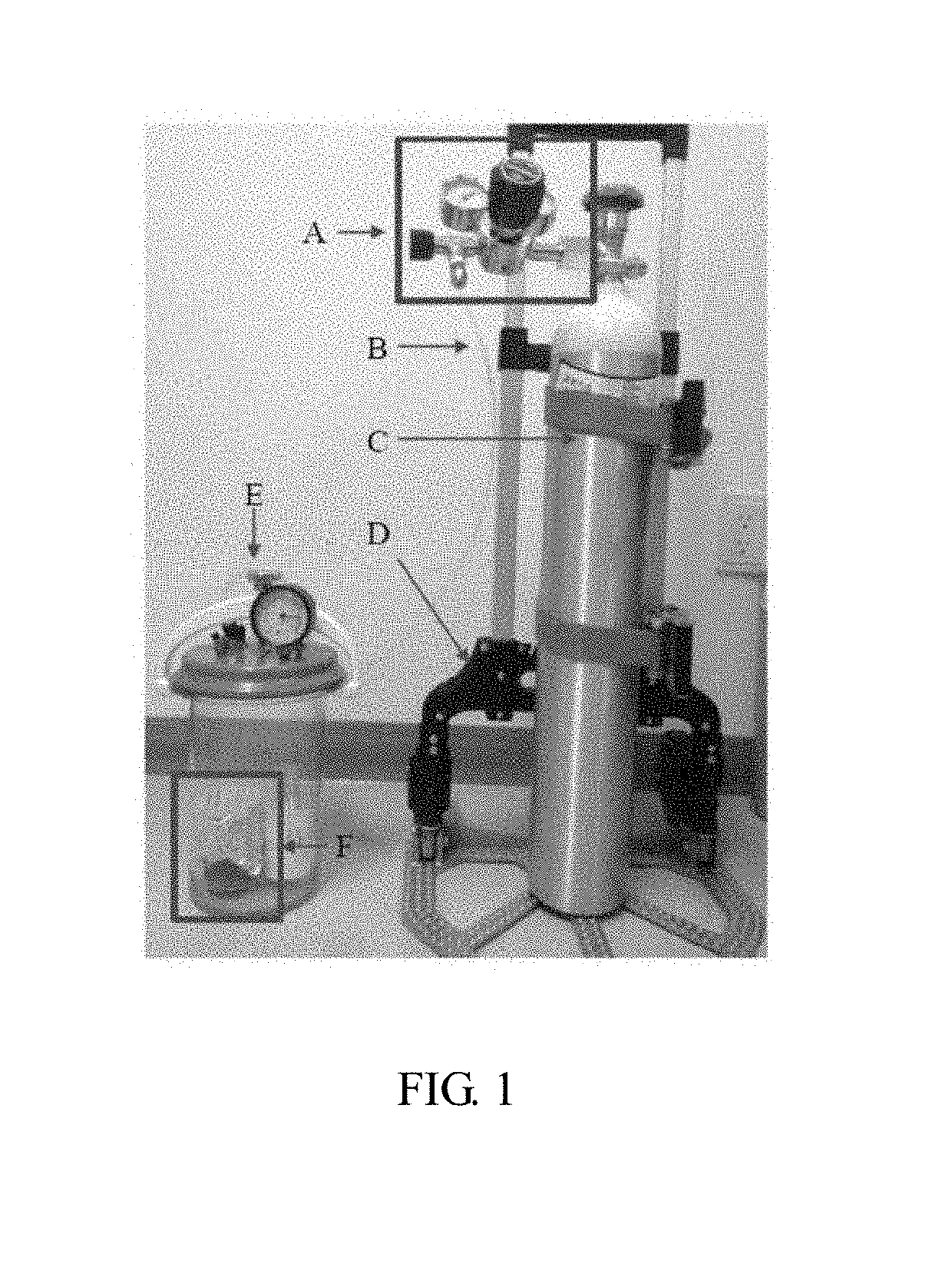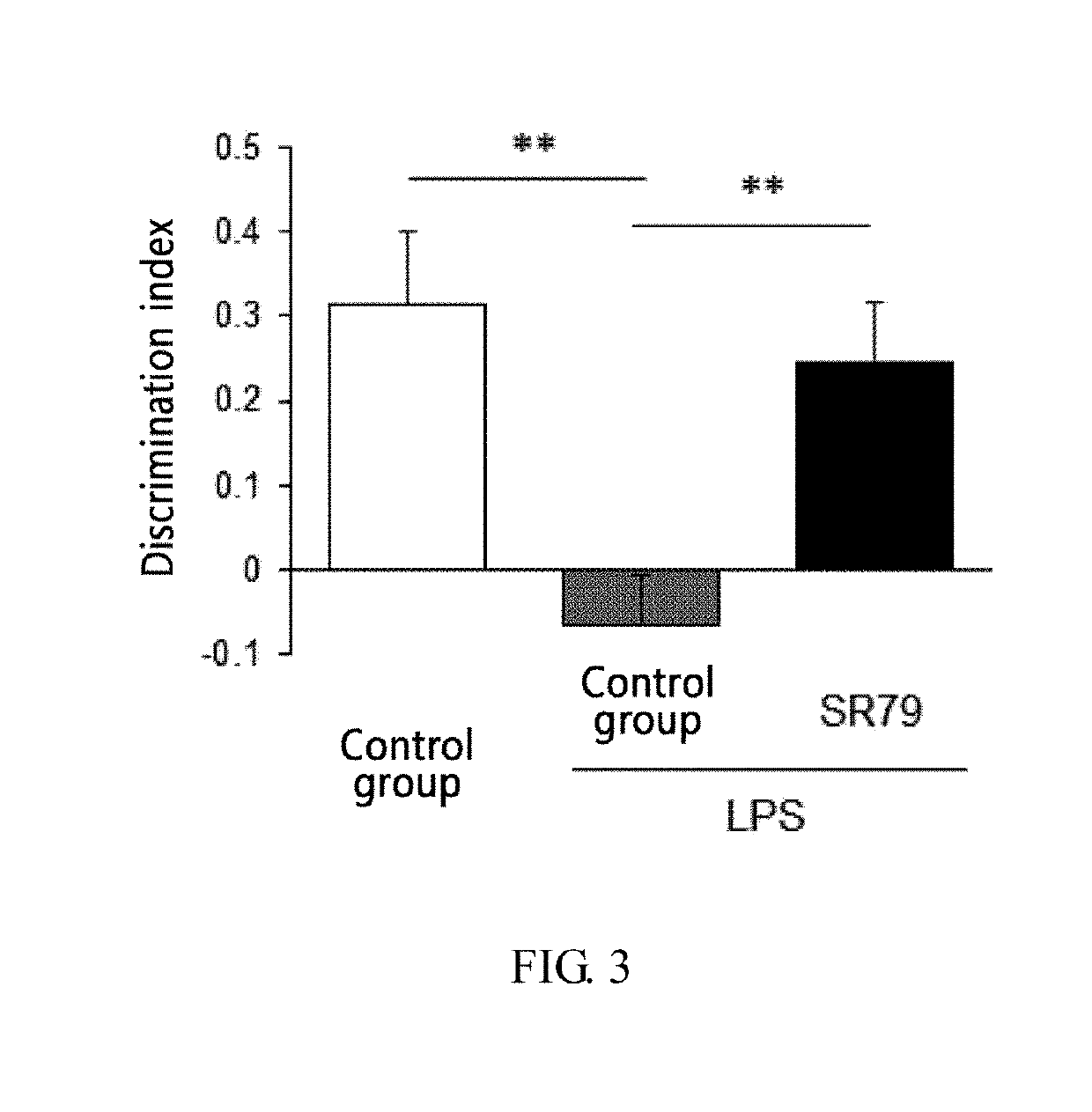AGATHOBACULUM SP. Strain Having Prophylactic or Therapeutic Effects on Degenerative Brain Diseases and Use Thereof
a technology of agathobaculum sp. and brain disease, which is applied in the field of agathobaculum sp. strain having prophylactic or therapeutic effects on degenerative brain diseases, can solve the problems of limiting the ability to treat the underlying cause of alzheimer's disease, degeneration brain disease has not yet been developed, and the cognitive ability has declined, so as to prevent or improve degenerative brain diseases.
- Summary
- Abstract
- Description
- Claims
- Application Information
AI Technical Summary
Benefits of technology
Problems solved by technology
Method used
Image
Examples
example 1
n of Stool Samples of Korean Healthy Pregnant Women
[0055]Stool samples were collected with the consent from healthy Koreans who visited the department of endocrinology, Chungnam National University Hospital in order to receive regular checkups. After the collection, each of the stools was put in a 50 mL sterile tube, and immediately placed without a lid of the tube in a pressurized anaerobic jar (3.5 L HP0011A, Oxoid, UK) which was then closed with the lid of the anaerobic jar. A gas mixture of nitrogen:hydrogen:carbon dioxide of 86:7:7 was injected for 20 minutes to replace the air in the anaerobic jar by the gas mixture containing no oxygen. A trace amount of oxygen remaining in the anaerobic jar was reduced into water by reacting with a palladium catalyst and hydrogen in the anaerobic jar, and thus removed. A configuration of such a device is shown in FIG. 1, which was manufactured by the present inventors' laboratory and named as a mobile sample collection bin for absolute anaer...
example 2
of Absolute Anaerobic Microorganisms from Stool Samples of Korean Healthy Women
[0056]The samples collected by the method of Example 1 were transferred to the Korea Research Institute of Bioscience and Biotechnology immediately after the collection, and the anaerobic jar containing the sample was put in an absolute anaerobic chamber (Coy Laboratory Product, USA) filled with a gas mixture (nitrogen:hydrogen:carbon dioxide of 86:7:7). The stool sample diluted with DSM 104 was spread on a DSM 104 agar plate (1.5% w / v) which was previously prepared under absolute anaerobic conditions, and then cultured at 37° C. for 48 hours to select formed colonies. A composition of the DSM 104 medium is as follows.
TABLE 1Compositiong / LTrypticase peptone5Peptone5Yeast extract10Beef extract5Glucose5K2HPO42Tween 801Cysteine-HCl × H2O0.5Resazurin0.001Salt solution (see Table 2 below)40 mLHaemin solution (see below)10 mLVitamin K1 solution (see below)0.2 mL The vitamin K1, haemin solution and the cysteine ...
example 3
tion of Efficacies of SR79 Strain on Degenerative Brain Diseases and Cognitive and Memory Functions
[0062]In order to investigate efficacies of the SR79 strain on degenerative brain diseases and cognitive and memory functions, it was intended to examine efficacies of the SR79 strain in Parkinson's disease-induced animal models and Alzheimer's disease mouse animal models.
[0063]3-1: Analysis of APPswe and PSEN1-Overexpressed Alzheimer's Disease Mouse Animal Model Experimental Groups
[0064]Therapeutic effects of the SR79 strain were examined in a mouse animal model (B6C3-Tg(APPswe / PSEN1dE9) 85DboJ, JAX, 004462) which had Alzheimer's disease due to overexpression of Alzheimer's disease-associated APPswe and PSEN1 genes in the brain. This mouse animal model is characterized by noticeable beta-amyloid deposition in the brain from 5 months of age, and Alzheimer's disease-specific cognitive impairment. The mouse animal model was raised with free access to sterile feed and water in a specific ...
PUM
| Property | Measurement | Unit |
|---|---|---|
| pH | aaaaa | aaaaa |
| exploration time | aaaaa | aaaaa |
| height | aaaaa | aaaaa |
Abstract
Description
Claims
Application Information
 Login to View More
Login to View More - R&D Engineer
- R&D Manager
- IP Professional
- Industry Leading Data Capabilities
- Powerful AI technology
- Patent DNA Extraction
Browse by: Latest US Patents, China's latest patents, Technical Efficacy Thesaurus, Application Domain, Technology Topic, Popular Technical Reports.
© 2024 PatSnap. All rights reserved.Legal|Privacy policy|Modern Slavery Act Transparency Statement|Sitemap|About US| Contact US: help@patsnap.com










